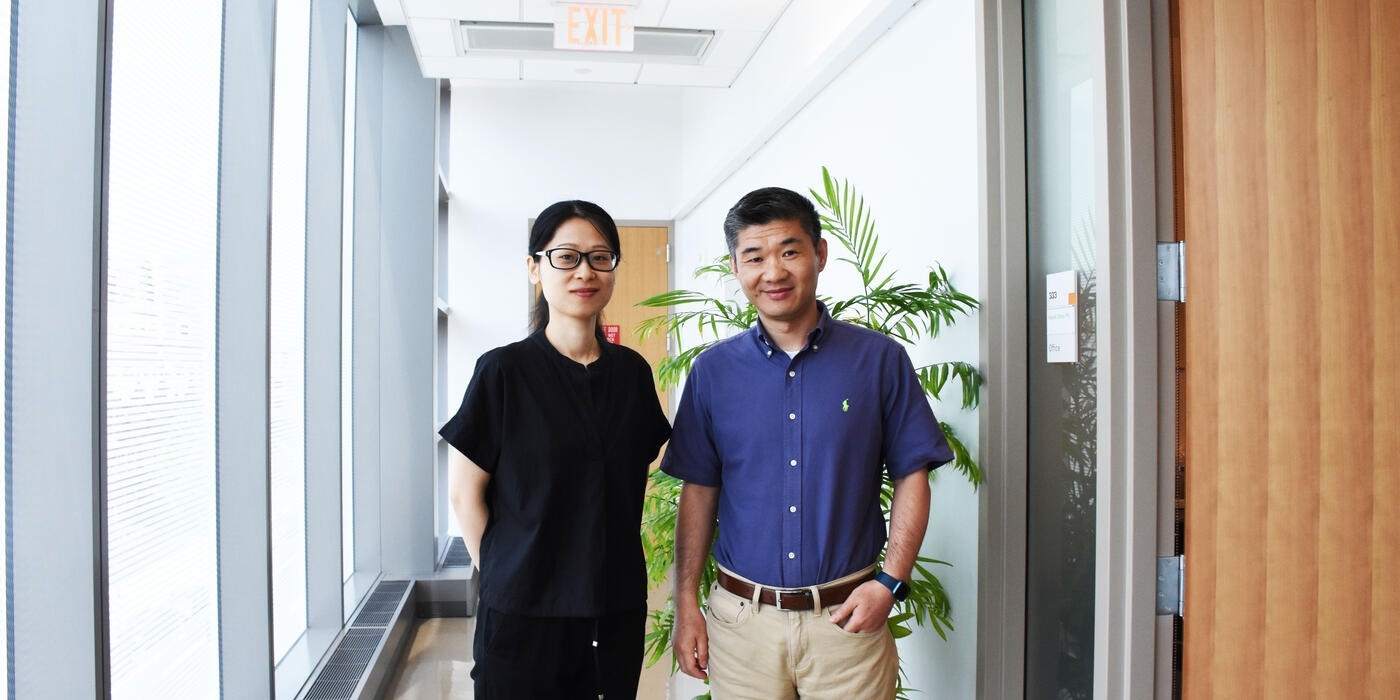Aging and age-related diseases present a complex challenge to biomedical researchers. Understanding how senescence is regulated is critical for promoting healthy aging and treating age-related disorders.

Image Credit: The Wistar Institute
Rugang Zhang, PhD., deputy director of the Wistar Ellen and Ronald Caplan Cancer Center, Christopher M. Davis Endowed Professor, and program leader of the Immunology, Microenvironment and Metastasis Program, and his colleagues revealed a new ADAR1-SIRT1-p16INK4a axis in controlling cell senescence and its potential implications in tissue aging in a study published in Nature Cell Biology.
Understanding the basic mechanism underlying tissue aging is challenging and cellular senescence offers an angle into the complex biology that drives tissue aging. These mechanistic insights gained by studying senescence regulation during tissue aging can, in turn, be used to promote healthy aging and combat age-associated disorders.”
Rugang Zhang, PhD, Deputy Director, Wistar Ellen and Ronald Caplan Cancer Center
The protein p16INK4a is central to this quest since its expression both rise during tissue aging and drives senescence. Previous research has shown that depleting p16INK4a-expressing cells is sufficient to delay age-related disorders.
As a result, strategies that prevent the age-related increase in p16INK4a expression may have essential implications for developing intervention strategies for promoting healthy aging.
The findings of the research team revolve around a protein known as ADAR1. ADAR1 is a specialized enzyme involved in RNA editing that has recently been discovered in senescence.
Xue Hao, PhD, a postdoctoral researcher in the Zhang lab and the paper’s first author, describes that this study was largely inspired by previous independent research in model organisms like fruit flies and worms that demonstrated that exhaustion of the equivalent of human ADAR1 in these organisms lessens the lifespan and creates age-dependent modifications like neurodegeneration.
This story also privileges the Wistar Institute’s collaborative culture. Kazuko Nishikura, PhD, professor in the Gene Expression & Regulation Program at Wistar’s Ellen and Ronald Caplan Cancer Center and a pioneer in ADAR1 biology, previously demonstrated that stressed cells use ADAR1 to protect themselves from apoptosis, or programmed cell death.
“As senescent cells are stressed cells and are resistant to apoptosis, the first question we set out to ask was whether ADAR1 is related to cellular senescence and secondly, how does it regulate senescence and what is its’ potential implication in tissue aging,” Hao explains.
The researchers first looked at ADAR1 expression in human fibroblasts in vitro and in vivo in multiple tissues from young and old mice. The researchers then modified ADAR1 expression in various cell types in petri dishes and mouse tissues to establish ADAR1 as a critical regulator of p16INK4a expression.
Surprisingly, the scientists determined that the absence of ADAR1 promotes the expression of p16INK4a via SIRT1, another protein known to regulate both senescence and tissue aging. Surprisingly, this function of ADAR1 is unrelated to its biological role in RNA editing.
Researchers also discovered that downregulation of ADAR1 during senescence by a process known as autophagy (the degradation and recycling of damaged or unneeded cell components) reduced the consistency of SIRT1 mRNA, which in turn increased the translation of p16INK4a to induce senescence.
Hao elaborates, “Our study revealed a novel ADAR1-SIRT1- p16 INK4a axis that plays an important role in cellular senescence at the translational level, and this newly defined function of ADAR1 is independent of its RNA editing function.”
Our study starts to reveal the missing link between ADAR1 and tissue aging through p16INK4a expression during senescence. In addition, these findings provided a scientific rationale to explore whether this newly discovered mechanism can be leveraged for therapeutic development regarding age-associated disorders.”
Rugang Zhang, PhD, Deputy Director, Wistar Ellen and Ronald Caplan Cancer Center
“One of the ways to potentially restore ADAR1 expression as a means to suppress p16INK4a and senescence observed during tissue aging is by inhibiting autophagy,” Hao specifies.
She adds about the following research stages, “Our study raises some interesting questions. For example, what is the relative contribution of this mechanism to p16INK4a expression during the aging of different tissues? In addition, it would be interesting to determine whether the intervention of this pathway can alleviate the age-associated disorders that are linked to p16INK4a expression in previously published animal models.”
Source:
Journal reference:
Hao, X., et al. (2022) ADAR1 downregulation by autophagy drives senescence independently of RNA editing by enhancing p16INK4a levels. Nature Cell Biology. doi.org/10.1038/s41556-022-00959-z.